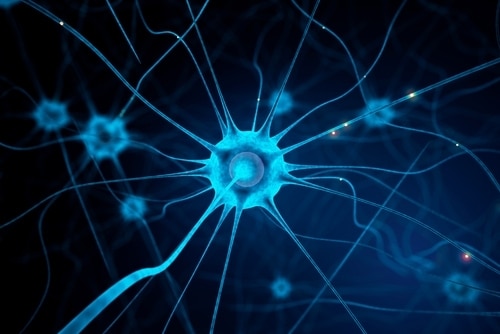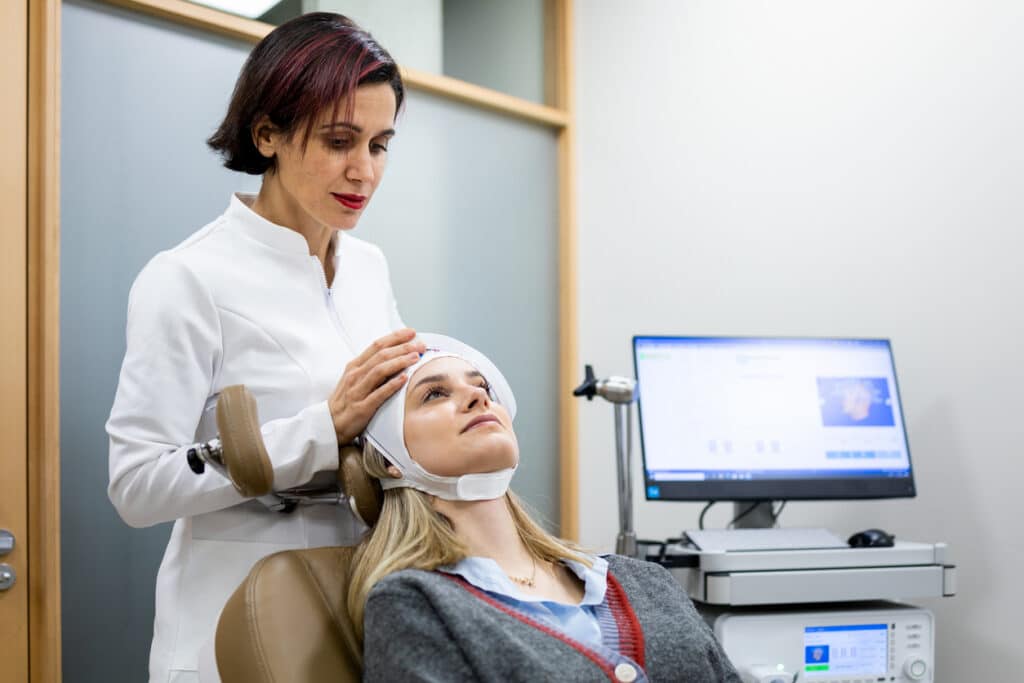By Deirdre Stewart, MSC, LAC
Director of Trauma Resolution Services for Meadows Behavioral Healthcare
Bessel van der Kolk, world-renowned trauma researcher and Senior Fellow of The Meadows, recently published his Randomized Controlled Study of Neurofeedback for those suffering chronic symptoms of developmental trauma. He showed a 40 percent increase in executive function in patients after 24 sessions of Neurofeedback training. Their improvements suggest that the patients were learning how to quiet the habitual firing of fear circuitries in their brains, providing them with an increased capacity to make good decisions. The study protocol mirrors the protocol we have been using at The Meadows and the Claudia Black Young Adult Center. Like Dr. van der Kolk, we are seeing significant emotional regulation and increases in executive function. We also use the same Neurofeedback system that Dr. van der Kolk used, the EEGer™.
How Neurofeedback Works
Neurofeedback has broadened the way we conceptualize presenting problems. We assess every patient through clinical history and diagnosis and look at signifiers that suggest how each patient struggles with emotional arousal. We look particularly for manifestations of fear, shame, and rage—the limbically driven emotions so common in those that have survived abuse, assault, and neglect in childhood. High arousal in the central nervous system shows up in the behaviors that bring patients to treatment, but also in their bodies, their sleep, their dreams, and, of course, their moods. This added assessment helps inform Neurofeedback protocols—all of which are designed to help trauma patients learn to quiet the churn of terror.
The regulation of arousal is implicated in most, if not all, mental health issues. The presenting symptoms we see are either a manifestation of activity in the brain or an attempt to regulate it, quiet it or both. It is their patterns of brain activation that our patients can learn to regulate with Neurofeedback.
The presenting symptoms we see are either a manifestation of activity in the brain or an attempt to regulate it, quiet it or both.
The majority of the patients at The Meadows and the Claudia Black Young Adult Center present with symptoms of high arousal and begin to feel the quieting of this over-activation during their stays. Quieting arousal can mean better sleep, better digestion and bowel function, reduced urges to self-harm, better decision-making, greater ability to be relational, and perhaps most importantly, an increased capacity to engage in and receive all other aspects of the program. When patients realize that the problems they suffer relate to the way their brains fire, the ignominy lifts, and the burden of shame is eased. One patient reported feeling “held and safe” following her first session—a feeling she reported as “totally new.” Another reported feeling “a sense that all the tension in my entire body was draining out from the bottom of my feet.”
Sebern F. Fisher, author of Neurofeedback in the Treatment of Developmental Trauma: Calming the Fear-Driven Brain and consultant to The Meadows, writes, “There is no other path: We must reduce fear.” Trauma promotes repetitive firing of fear circuitry in the brain. These activation patterns can be persuasive and lead to behaviors that, although at some point are adaptive, have now become maladaptive.
As demonstrated in Dr. van der Kolk’s study, these patterns can be best addressed with Neurofeedback. Sebern looks at Neurofeedback as a relational technology. We agree. Fear, shame, and rage stress relationships, and most people who suffer from developmental trauma have problems in their most important relationships. The best reason to address the regulation of the brain is to build the capacity for healthy relationships. Neurofeedback at The Meadows is offered within the full therapeutic context. Therapists and patients look for effects from brain training and take the opportunity to identify and practice new relational behaviors. We believe that Neurofeedback is most effective when integrated in this way.
Treatment Programs at The Meadows
Each of The Meadows family of programs offers multiple brain level interventions to all patients, including Neurofeedback and Biofeedback. Our on-site Brain Centers also offer additional approaches to self-regulation, including Cranio-electro stimulation (CES), Heart-Rate Variability (HRV) training, Audio/Visual Stimulation (AVS) with CES, Hemoencephalography biofeedback (HEG), and Chi Machine, as well as trauma-informed yoga, meditation, drumming, Somatic Experiencing® (SE), movement and dance, Tai Chi, and mindfulness practice.
Each of The Meadows family of programs offers multiple brain level interventions to all patients, including Neurofeedback and Biofeedback.
Dr. van der Kolk insists that we must learn to “befriend our internal experience.” A salient aspect of Neurofeedback is that it invites patients to become curious about their bodies, which are often previously disowned parts of themselves. Lastly, Neurofeedback helps to develop a self-system, where oftentimes one does not exist. This provides us the ability to self-reference because, without the self, there can be no other. And, patients cannot travel back in time to create a coherent narrative of their life without first establishing a traveler.
The entire therapeutic program at The Meadows is devoted to helping patients gain an increased capacity for self-regulation and healthy relationships. Quieting the fear-driven brain uniquely serves this goal. By regulating and quieting our brains, we are more able to reach and change our minds.
Read Dr. van der Kolk’s full research article, “A Randomized Controlled Study of Neurofeedback.”



